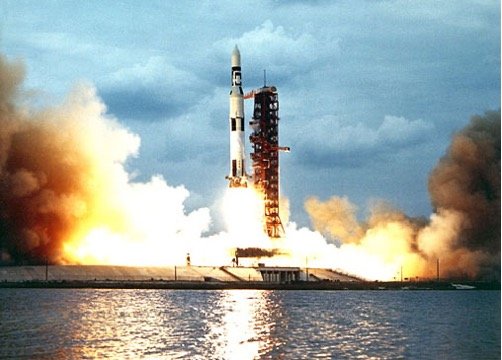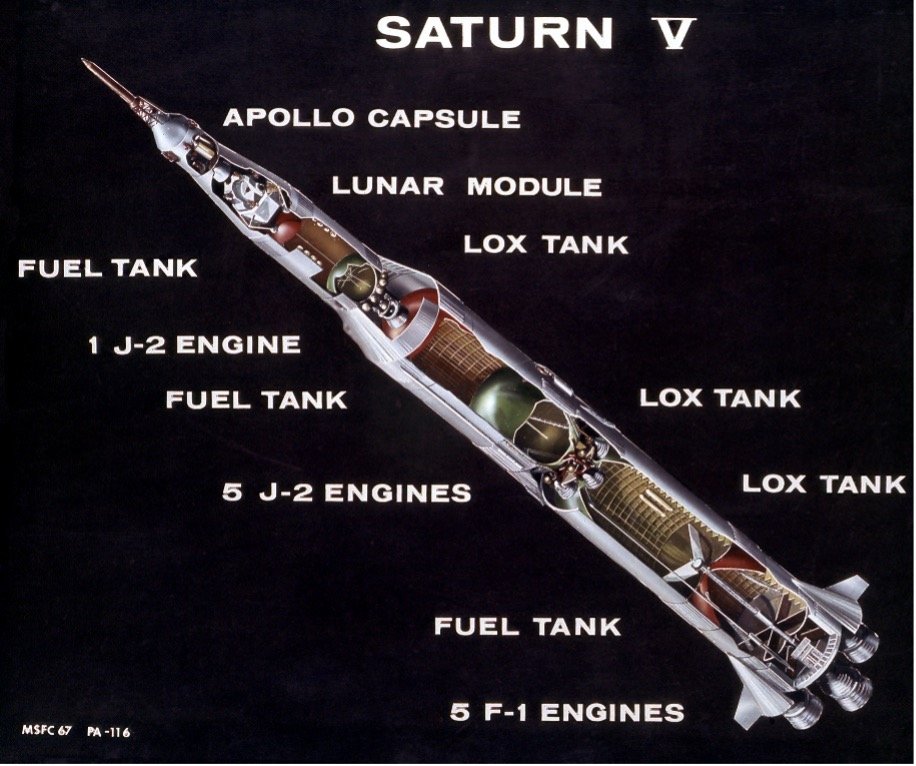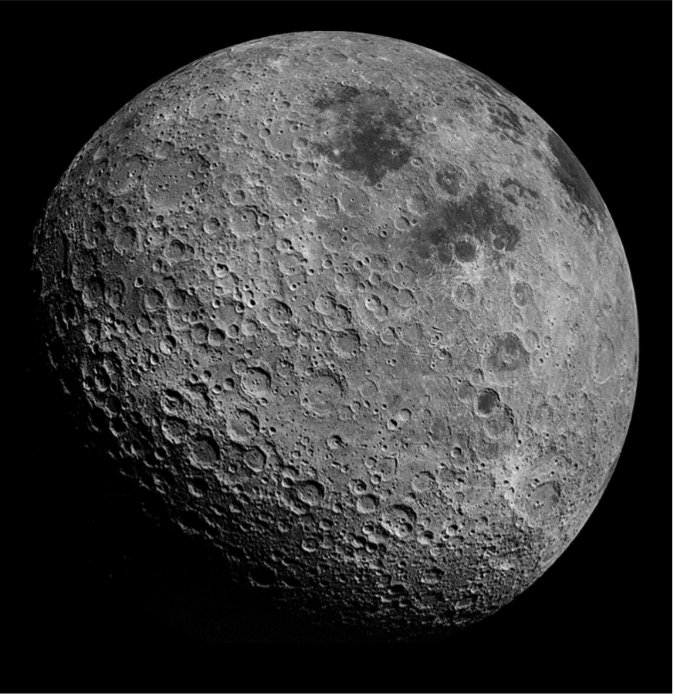How Many Parts Are in a Rocket That Goes to the Moon?
Via NASA
Ask a Rocket Scientist
by Rob Webb on March 7, 2022First Name: Mayah
First Letter of Last Name: L
What is your favorite planet or star? Earth
What is your favorite rocket? I don't know
Type your question here: How many pieces does it take to build a rocket ship to go to the moon?
Thanks for your great question, Mayah! My favorite planet is also the earth since God made it for us to inhabit and have dominion! (Genesis 1:28; Isaiah 45:18)
The short answer to your question is that it takes A LOT of pieces to build a rocket to fly to the moon! My all-time favorite rocket is the Saturn V, the tallest and most powerful rocket ever built and flown, which successfully launched astronauts to the moon! We’ll use this rocket (retired in 1973) as an example to answer your question.

Via NASA
But first, let’s go over a little background of this really cool rocket. The Saturn V was a busy rocket in the 1960s and 1970s that NASA used during the Apollo program. This program included the famous Apollo 11 mission in 1969 that sent Neil Armstrong, Edwin “Buzz” Aldrin, and Michael Collins to physically touch down on the moon for the first time in history. It was also used for sending astronauts to the moon on the Apollo 12, 14, 15, 16, and 17 missions. It really was a great rocket for NASA!
This type of rocket is considered a three-stage heavy-lift vehicle, meaning it was super powerful! The Saturn V was about 363 feet tall. That’s even taller than even the Statue of Liberty! It generated enough thrust (upward force produced by the engines) to launch about 130 tons into orbit. That’s about as much weight as nearly 30 elephants stacked on top of each other!

Via NASA
In terms of how many “pieces” were on this rocket, there were actually over three-million parts1 (counting all the small stuff like wires, nuts, bolts, etc.). In terms of the “larger” pieces, there were about a dozen main parts, including the engines, fuel tanks, and the front capsule that held the astronauts. These were the really important parts of the rocket. As you can imagine, getting all those pieces to work together successfully was very difficult and most certainly a huge challenge for the rocket scientists back then!

Via NASA
Overall, these NASA missions to the moon using the Saturn V rocket were part of an exciting (and fun) period in rocket science history, which was actually led by Christian scientists. Many of these men understood the biblical reason for building rockets to explore the moon (and beyond). Let us continue to do the same by admiring the glory of God (Psalm 19:1-2) in all of his awesome creation. Give thanks to Jesus for always holding our universe together by his power (Hebrews 1:1-3), making rocket science possible!
Bonus Response
First Name: Samuel
First Letter of Last Name: V
What is your favorite planet or star? The Moon
What is your favorite rocket? The apollo 11
Type your question here: Is the moon actually white, and if it is...Why?
God made two great lights—the larger one to govern the day, and the smaller one to govern the night. He also made the stars. God set these lights in the sky to light the earth, to govern the day and night, and to separate the light from the darkness. And God saw that it was good. (Genesis 1:16-18)
Thanks for your great question, Samuel! Just so you know, the moon is technically not a planet or a star, and Apollo 11 is the name of the mission that used the Saturn V rocket!

Via NASA
At first glance, here on the earth, the moon does appear bright white (and somewhat yellowish too), but it’s more of a dark gray color up close. The moon doesn’t produce any light, so it appears “white/yellow” in the sky because we’re seeing the reflected light from the sun that’s bouncing off the moon’s surface. I hope this helps, and God bless!
Ask Your Question
Ask a parent to help you submit your space-related question to Rob Webb today! Don't forget to check back next week to see if your question was chosen!
Footnotes
- “Saturn V: America’s Moon Rocket,” Smithsonian Air and Space, https://airandspace.si.edu/exhibitions/space-race/online/sec300/sec384.htm.
- © 2024 Answers in Genesis
- Privacy Policy
- Contact
- About
